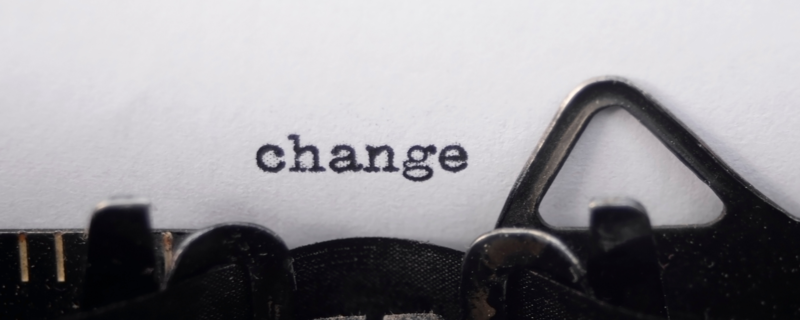From mouth pipetting to fully automated liquid handlers
Written by Marlene Frank
03. November 2023
In today's state-of-the-art labs, it might be hard to imagine that scientists once relied on their mouths to transfer liquids from one vessel to another. However, mouth pipetting – a method now considered archaic and dangerous – was once the norm. Join us as we explore the history and dangers of mouth pipetting, and the subsequent innovations that revolutionized this lab practice.
Table of contents
What is mouth pipetting?
Mouth pipetting is an outdated lab technique in which a scientist sucked a liquid into a glass tube with their mouth, similar to using a straw to sip a drink. This method required the user to hold the tube in their lips, dip the tube tip into the liquid in the source container, and aspirate the liquid by inhaling to create a vacuum. They would then remove the tube from their lips and seal it with their thumb, hold the tip in the target container, and lift their thumb to dispense the liquid.
Hazards of mouth pipetting
As you can imagine, mouth pipetting was anything but safe. There was no barrier between the user and the potentially hazardous substances being handled, exposing lab professionals to the risk of ingesting or inhaling pathogens, radioactive materials and dangerous chemicals such as vapors that could, for example, damage their teeth.
The technique was indeed a leading cause of workplace-related infections in labs prior to the 1970s. The first recorded case of an infection due to mouth pipetting occurred in 1893 when a physician accidentally sucked a culture of typhoid bacilli into his mouth. A good two decades later, a survey of 57 labs in 1915 reported 47 workplace-related infections, with 40 % directly linked to mouth pipetting. Furthermore, a longitudinal study analyzing 921 laboratory-acquired infections between 1893 and 1950 found that 17 % were a consequence of aspirating orally through pipettes or culture fluids splashing into the mouth.1
Mouth pipetting not only jeopardized the health of the scientists but also compromised the reliability of the results, as it was challenging to transfer precise volumes using this method. Moreover, there was a risk of contaminating the sample or reagent being pipetted with respiratory aerosols from the user.
As the method posed a threat to the health of the researchers, was inaccurate and had a high risk of contamination, it was successively replaced by piston-operated pipettes and other liquid handling solutions. Before we take a closer look at these alternatives, we would like to explain when mouth pipetting disappeared from labs.
When did mouth pipetting stop?
Shockingly, mouth pipetting is probably still being used in some countries, as studies published in 2008 and 2012 found that 10 % of lab technicians in Nigeria and 28.3 % in Pakistan are still employing the technique.1 However, most labs stopped mouth pipetting in the 1970s when affordable manual pipettes became widely available.2
The first scientists who were lucky enough to use a piston-operated pipette were those working at the University of Marburg in Germany. It was there that Heinrich Schnitger – a postdoc annoyed with the hazardous and inaccurate mouth pipetting process – developed the first instrument similar to the micropipettes we know today. His pipette consisted of a small metal syringe with a spring, an end stop, and a polyethylene tip. This allowed him to aspirate and dispense a precise volume of liquid by simply pressing and releasing the plunger. He intended to use it for corrosive formic acid, so he even added an air buffer to ensure that the liquid was confined in the tip and didn't come into contact with the syringe piston. He applied for a patent on his invention in 1957 and obtained it in 1961.3,4
The first pipette to offer adjustable volumes was developed by Warren Gilson and Henry Lardy, and patented in 1974.5 Manual single channel pipettes similar to their invention can still be found in today's labs (see Figure 1 below) and offer a safe alternative to mouth pipetting. However, there are many other liquid handling solutions that can also be used.

Safer alternatives to mouth pipetting
Pipette controllers
For applications that require larger aspiration and dispense volumes, mouth pipetting has been replaced not by micropipettes but by rubber bulbs and pipette controllers. Rubber bulbs effectively protect you from hazardous chemicals, radioactive substances and pathogens. However, pipette controllers provide added benefits like enhanced accuracy and throughput due to a wide range of speed settings, and aspiration and dispense buttons controlled by finger pressure.

Manual and electronic single and multichannel pipettes
Manual single channel pipettes offering adjustable volumes have not only been refined over the years since their invention in the 1970s, but are now also available in multichannel formats. Moreover, both single and multichannel pipettes are also offered in electronic versions, providing several advantages over their manual counterparts – of course at a higher price tag. For example, they can reduce the risk for repetitive strain injuries as the pistons are moved by a push of a button, and can simplify complex protocols by offering preset and custom programs. For a more extensive list of advantages, please check out our article entitled "5 reasons why you should use electronic pipettes".

Adjustable tip spacing pipettes
When samples and reagents need to be transferred between different labware formats – for example, from tubes to plates – multichannel pipettes with fixed tip spacing reach their limit. Adjustable tip spacing pipettes are available to save scientists from resorting to single channel pipettes, improving the throughput for these workflows. Different models are available that offer manually adjusted tip spacing, and the VOYAGER pipette even offers motorized tip spacing at the push of a button.

24, 96, 384 and 1536 channel benchtop pipettes
Benchtop pipettes offering 24, 96, 384 and 1536 channel pipetting heads are available for high throughput labs filling several microplates a day with reagents and samples. These allow you to fill all the wells of a microplate simultaneously, saving time and reducing the risk of repetitive strain injuries arising from long pipetting sessions.

Pipetting robots
The latest liquid handling innovations are pipetting robots and automated solutions, which have made their way into the laboratory in recent years. Some manufacturers offer large, high throughput platforms whereas others focus on space saving, flexible and more affordable options for automating pipettes and pipetting modules, such as the ASSIST PLUS pipetting robot.

Conclusion
Reviewing the journey from mouth pipetting to the diverse liquid handling devices available today shows how far we've come in terms of safety, precision and efficiency. The invention of the micropipette is arguably the most influential advancement for labs in the last century, and the future holds many possibilities for exciting inventions to make everyday lab life even easier. What innovative device or feature could simplify your workflows? Share your ideas with us by leaving a comment below!


























